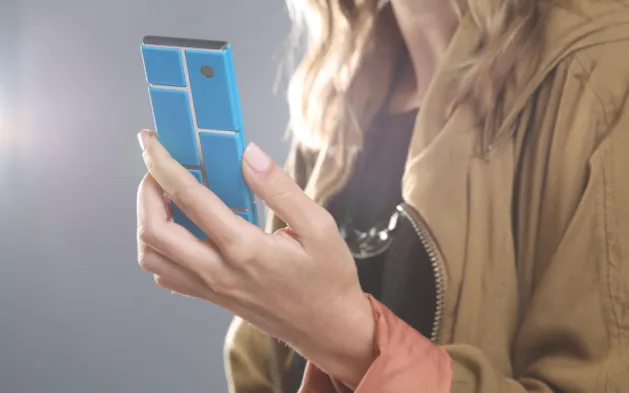Smartphone apps started a revolution. From merely making calls and sending texts, phones suddenly became mp3 players, sat-navs and games consoles. Anything, in short, that could be done with sound chips, GPS, colour screens and whatever else was built into your phone.
But even those limitations may soon be a thing of the past, because Google has a radical plan to transform the very idea of mobile phones. It believes that hardware, rather than software, could create a new kind of app revolution. In this case, the ‘apps’ are individual hardware components that slot together like Lego bricks. Want a better camera? More memory? You’ll be able to switch old for new, without even turning your phone off.
The idea of a modular smartphone isn’t new. Back in the December 2013 issue of Focus, Bill Thompson described a concept called Phonebloks. Its designers wanted to cut down on electronic waste, and they had a good point. In the UK alone an estimated 15 million phones are upgraded every year, which means an awful lot of perfectly usable display screens, speakers and Bluetooth antennas are lying idle or simply being thrown away in landfill.
But Google’s Ara concept goes one step further. Just as many different software developers develop programs for app stores, so it’s hoped that hardware developers will create niche modules that go beyond conventional phone functions. Examples touted so far include scanners to read your pulse or measure your blood oxygen level, microscopes, infrared cameras and credit card readers. Google suggests that many different business, science and leisure pursuits could all benefit from modules made for niche applications.
Skeleton stuff
You’ll be able to slip your tile-like modules into an aluminium frame called the ‘Endo’, short for endoskeleton. There will be three – Mini (45x118mm), Medium (68x141mm) and Large (91x164mm). The latter will be as big as today’s ‘phablets’. You might own just one Endo, but in practice you’ll probably want two – a Mini or Medium for travelling and a large when you get home makes perfect sense, since you can simply swap modules between them. Swapping is easy as there are no fiddly plugs – parts communicate wirelessly via ‘capacitive interconnect’ pads – and modules are fixed firmly in place by electromagnets.

The downside of separate components is that Ara will be fatter, heavier and have less impressive battery life than your current smartphone. But Google is aiming to make it just 25 per cent worse in these areas, and hopes that will be enough to tempt you – especially when you consider that the module’s plastic shells are infinitely customisable. Want a photo on the back? Your own choice of colours and patterns? Even a texture? When you place an order, all these will be produced using state-of-the-art 3D printers.
Ara is still only a prototype, but Google is said to be aiming for a launch in early 2015. An extremely basic and cheap version lacking even a telecoms chip may be sold first in developing countries. Ara, then, could be less the future of mobile phones and more the future of mobile computers – one in which a tablet computer is anything you want it to be.
This article first appeared in the July 2014 issue of BBC Focus magazine
Follow Science Focus onTwitter,Facebook, Instagramand Flipboard